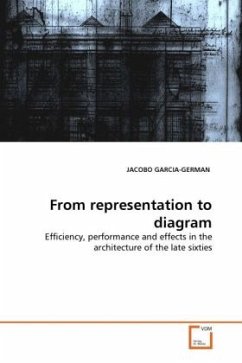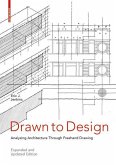Contemporary architectural notation looks to have evaded the need for an increasingly complex description of the elements, actions and conglomerate realities that add up to form a project. The notion of diagram as strategic device in order to enable certain effects comes at odds with the traditional plan or abstraction as understood since the 18th century. This book explores the progressive shift from "representation" to "diagram" based on some late sixties examples, conceptualizing the work of figures such as Reyner Banham and Cedric Price in their move towards a performative architecture and the use of its associated tools of validation such as organization, strategies of timing, non-planing, or sets of instructions.
Bitte wählen Sie Ihr Anliegen aus.
Rechnungen
Retourenschein anfordern
Bestellstatus
Storno








